Power Pitch
Image Reconstruction, Motion Correction & Artifacts
ISMRM & ISMRT Annual Meeting & Exhibition • 10-15 May 2025 • Honolulu, Hawai'i

| 16:00 |
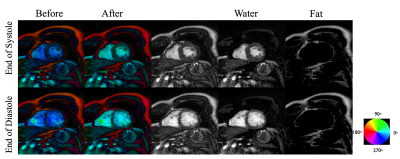 |
Screen Number: 1
0323. Feasibility
of Water-Fat Separation for 2D Cardiac CINE Imaging with a
Phase-Sensitive Approach on a 0.6T magnet
D. Wang, T. C. Chao, J. Browne, E. Ercan, M. Povazan, S.
Waddle, J. Smink, T. Leiner
Mayo Clinic, Rochester, United States
Impact:
Water and fat signals become difficult to separate with midfield MRI scanners. The presented work utilizes an EPI scan to improve scan speed of a cine series while achieving fat and water separation with the phase information.
|
| 16:02 |
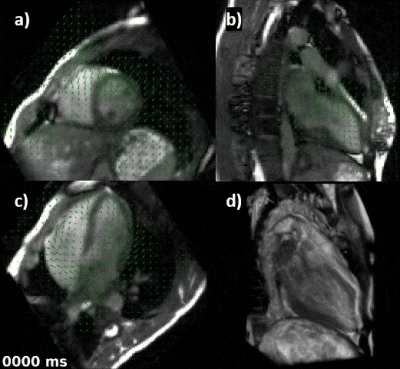 |
Screen Number: 2
0324. Free-Running
Time-Resolved 3D+time Cardiovascular MRI at 40 Hz in a One
Minute Scan using Cartesian Sampling and CMR-MOTUS
T. Olausson, M. Terpstra, E. Versteeg, C. Beijst, S. M.
Arshad, B. Velthuis, C. van den Berg, A. Sbrizzi
University Medical Center Utrecht, Utrecht, Netherlands
Impact: By extracting high-quality time-resolved 3D
motion fields at a very high temporal resolution (40Hz), the
entire acquisition can be leveraged in the image
reconstruction, hence shorter scans. Additionally,
time-resolved cardiovascular volumetric analysis is enabled
i.e. time-propagating segmentations using motion fields.
|
| 16:04 |
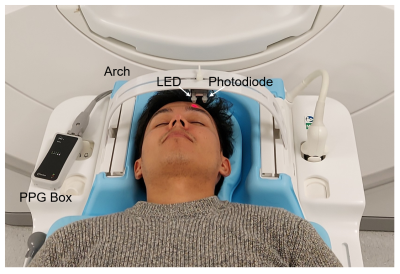 |
Screen Number: 3
0325. Contactless
Fiber-Optic Photoplethysmography-based Gating for Flow MRI.
S. Emery, M. Fütterer, S. Kozerke
ETH and University of Zürich, Zürich, Switzerland
Impact: Contact forehead-PPG offers a simple approach to
cardiac gating with reduced latency relative to peripheral
pulse units, potentially easing clinical workload and
enhancing patient comfort.
|
| 16:06 |
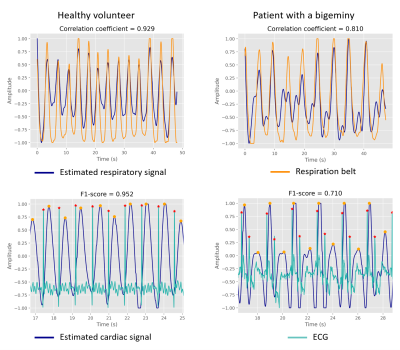 |
Screen Number: 4
0326. Sensor-free
physiological guidance for free-breathing cardiac cine
reconstruction using CineJENSE: example of an arrhythmic patient
L. Quillien, M. Doguet, N. Vogt, Z. Al-Haj Hemidi, P-A
Vuissoz, J. Oster
IADI, INSERM U1254, Université de Lorraine, Nancy, France
Impact: Sensor-free physiological signal estimations
using noise variance from k-space data for free-breathing
ungated cardiac cine reconstruction were shown for two
examples (healthy volunteer and arrhythmic patient). Results
showed good concordance with reference signals and the
reconstructions could be performed.
|
| 16:08 |
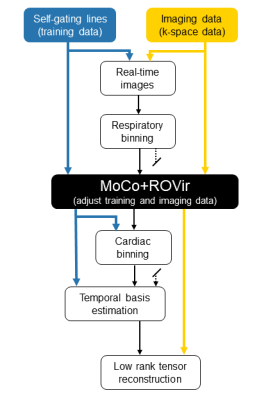 |
Screen Number: 5
0327. Enhanced
cardiac motion capture during respiration via RF receiver
cardiac focusing with respiratory motion compensation
Z. Hu, H-L Lee, T. Cao, J. Finn, K-L Nguyen, A.
Christodoulou
David Geffen School of Medicine, UCLA, Los Angeles, United States
Impact: The combination of MoCo and ROVir prioritizes
modeling of cardiac motion, suppresses respiratory motion,
and reduces artifacts. The improved respiratory handling
from these techniques may provide an avenue for
free-breathing scanning in pediatric patients with CHD.
|
| 16:10 |
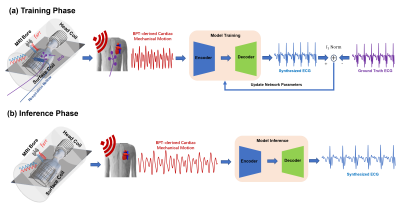 |
Screen Number: 6
0328. Deep
Learning-Driven ECG Synthesis from Beat Pilot Tone Signals for
Physiological Monitoring and Image Reconstruction
H. Sun, S. Zhong, Q. Ding, P. Lee, Z. Zhang
Shanghai Jiao Tong University, Shanghai, China
Impact: This work explores the potential for contactless
ECG monitoring during MRI, improving patient comfort and
workflow. Compared to BPT-derived cardiac signals, the
synthesized ECG better suits clinicians' interpretation
habits, potentially enhancing physiological monitoring.
Additionally, it offers sharper signals for triggering.
|
| 16:12 |
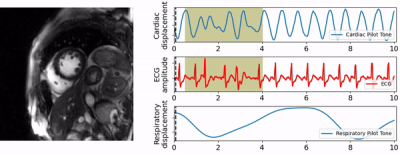 |
Screen Number: 7
0329. Evaluation
of high-amplitude pilot-tone with interference cancellation
(HAPTIC) cardiac gating at 0.55T in the challenging case of
arrhythmia
B. Tasdelen, E. Yagiz, Y. Tian, K. Nayak
University of Southern California, Los Angeles, United States
Impact: HAPTIC could potentially replace ECG gating,
even in patients with cardiac arrhythmia. This would
simplify clinical workflow and serve scanners that do not
have an integrated ECG.
|
| 16:14 |
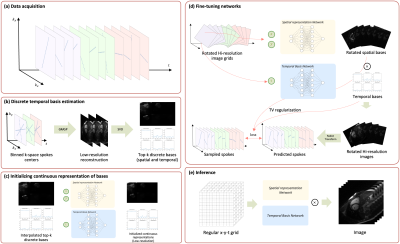 |
Screen Number: 8
0330. Subspace
Implicit Neural Representations for Real-Time Cardiac MR Imaging
W. Huang, V. Spieker, S. Xu, G. Cruz, C. Prieto, K.
Hammernik, T. Küstner, D. Rueckert
Technical University of Munich, Munich, Germany
Impact: This method provides a novel reconstruction
approach for real-time cardiac MRI with continuous radial
acquisition, and will potentially reducing scan times and
improving diagnostic capabilities, especially for imaging
arrhythmias and characterizing beat-to-beat dynamics
compared to conventional approaches.
|
| 16:16 |
 |
Screen Number: 9
0331. Frequency
Modulated Continuous Wave Radar-based prospective respiratory
motion correction: Initial application for 2D cardiac cine MRI
J. Diao, Y. Ren, W. Liu, P. Liu, H. Wang, J. Zhu, J. Xu, Z.
Zhou, H. Qi, P. Hu
ShanghaiTech University, Shanghai, China
Impact: In this study, we demonstrated that the FMCW
radar signal is a suitable surrogate for motion estimation
and correction. The proposed respiratory motion-correction
technique shows promising potential in reducing motion
artifacts in cardiac MRI.
|
| 16:18 |
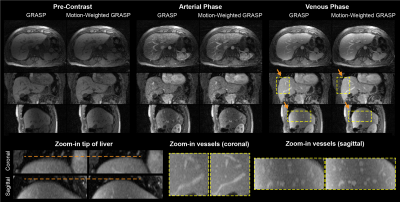 |
Screen Number: 10
0332. Correction
of Respiratory Motion in Free-Breathing DCE-MRI using a
Pilot-Tone Coil
R. Zi, M. Bacher, P. Speier, R. Lattanzi, K. T. Block
New York University Grossman School of Medicine, New York, United States
Impact: The PT technique offers accurate detection of
respiration and enables motion-weighted reconstruction to
reduce motion blurring in free-breathing DCE-MRI. It is easy
to use, without need to place belts or sensors when using a
body coil with integrated PT transmitter.
|
| 16:20 |
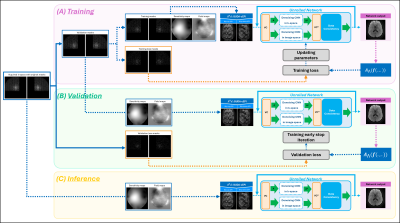 |
Screen Number: 11
0333. Exploring
SNR-Enhanced Reconstruction Techniques for Mesoscale Resolution
BUDA-cEPI Diffusion MRI
A. Suwannasak, C. Liao, K. Setsompop, I. Chatnuntawech, U.
Yarach
Chiang Mai University, Chiang Mai, Thailand
Impact: Our exploration may provide the advancement of
superb and appropriate dMRI reconstruction for high-fidelity
dMRI at mesoscale resolution on clinical scanners by
addressing SNR challenges and preserving fine anatomical
details critical for accurate diagnosis and analysis.
|
| 16:22 |
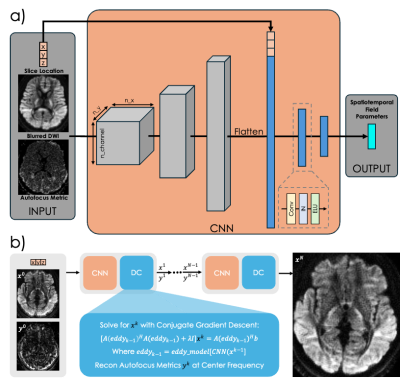 |
Screen Number: 12
0334. ACE-Net:
AutofoCus-Enhanced Convolutional Network for Field Imperfection
Estimation with application to high b-value spiral Diffusion MRI
M. Gao, Z. Shah, X. Cao, D. Abraham, N. Wang, K. Setsompop
Stanford University , Stanford, United States
Impact: We show accurate automatic estimation of
spatiotemporal B0 and eddy field imperfections, which
enables high-quality high b-value spiral diffusion imaging
without additional calibration scans/field-probe
measurements, should also prove useful to several other
rapid imaging schemes and applications.
|
| 16:24 |
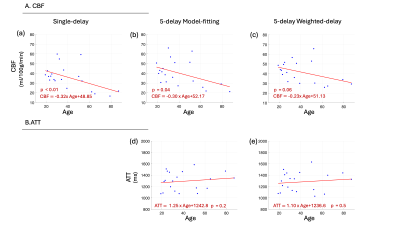 |
Screen Number: 13
0335. A
Test-Retest Study of Single- and Multi-Delay pCASL for Choroid
Plexus Perfusion Imaging in Healthy Subjects Aged 19 to 87 Years
Z. Liu, Q. Shou, K. Jann, C. Zhao, D. Wang, X. Shao
University of Southern California, Los Angeles, United States
Impact: Single and multi-delay ASL showed similar
test-retest repeatability for measuring ChP perfusion.
However, the underestimation of ATT with single-delay ASL
affects the accuracy of the results. Multi-delay ASL with
model-fitting analysis is recommended for measuring ChP
perfusion.
|
| 16:26 |
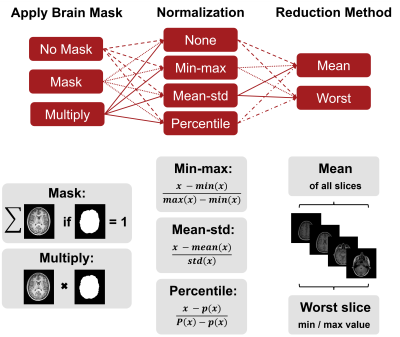 |
Screen Number: 14
0336. Assessing
the Influence of Preprocessing on the Agreement of Image Quality
Metrics with Radiological Evaluation in the Presence of Motion

H. Eichhorn, E. Marchetto, D. Gallichan, J. Schnabel, M.
Ganz
Helmholtz Munich, Neuherberg, Germany
Impact: This study underscores the critical role of
preprocessing choices for reliable image quality evaluation.
We strongly recommend documenting all preprocessing steps in
future studies. Our results further demonstrate that
reference-based metrics correlate more reliably with
radiological assessments than reference-free metrics.
|
| 16:28 |
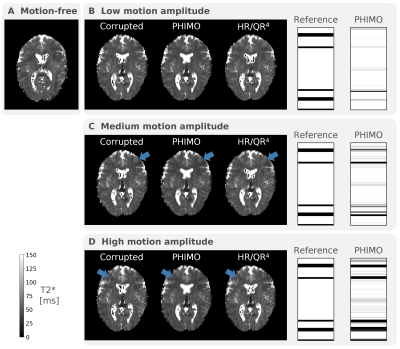 |
Screen Number: 15
0337. Leveraging
Acquisition Knowledge to Enhance Robustness of Physics-Informed
Motion Correction for T2* Quantification
H. Eichhorn, V. Spieker, K. Hammernik, E. Saks, L. Felsner,
K. Weiss, C. Preibisch, J. Schnabel
Helmholtz Munich, Neuherberg, Germany
Impact: Our
proposed extensions enhance PHIMO’s reconstruction
performance and line detection robustness, making
T2*-quantification more reliable under various motion
conditions. The enhanced PHIMO reaches the performance of a
state-of-the-art correction method, while accelerating the
acquisition by over 40%, facilitating clinical
applicability.
|
| 16:30 |
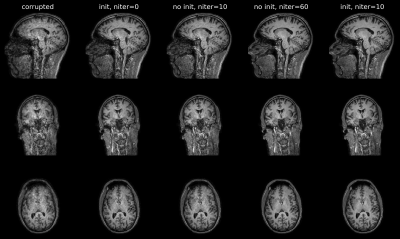 |
Screen Number: 16
0338. Navigator-Assisted
Fast Motion-Compensated Brain MRI
J. Meineke, K. Sommer, O. Lips, J. Keupp
Philips Innovative Technologies, Hamburg, Germany
Impact: Making accurate and fast motion-compensated
brain MRI without additional devices available will reduce
costs associated with non-diagnostic images and resulting
rescans.
|
| 16:32 |
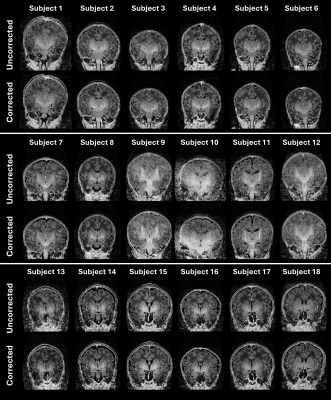 |
Screen Number: 17
0339. Motion
corrected MP2RAGE neonatal imaging at ultra-high field with
inline reconstruction.
D. West, Z. Ning, A. S. Dokumaci, Y. Brackenier, L.
Cordero-Grande, R. Tomi-Tricot, S. McElroy, P. Bridgen, P.
Di Cio, S. Giles, I. Tomazinho, C. Da Costa, D. Gallo, A.
Bonthrone, J. Cleary, T. Arichi, J. Hajnal, S. Malik
King's College London, London, United Kingdom
Impact: DISORDER
acquisition and reconstruction significantly improves the
quality of T1w neonatal imaging at 7T using MP2RAGE, as
indicated by both quantitative metrics and radiological
scoring. Deployment of Gadgetron-based inline DISORDER
reconstruction enables scanner preview of the motion
corrected 3D volumes.
|
| 16:34 |
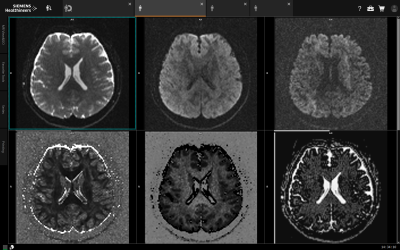 |
Screen Number: 18
0340. Real-time
quantitative MRI enabled by scanner integrated machine learning:
a proof of principle with NODDI
S. Rot, I. Dragonu, D. Thomas, D. Alexander, H. Zhang
UCL, London, United Kingdom
Impact: Real-time, online qMRI parameter estimation with
the presented strategy resolves a key practical barrier to
clinical uptake of qMRI methods and enables their efficient
integration into clinical workflows.
|
| 16:36 |
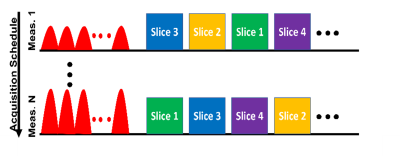 |
Screen Number: 19
0341. Deep
Learning Optimization of Acquisition-Parameter and
Slice-Ordering Schedule for Fast Quantitative Multi-Slice CEST
O. Cohen, R. Young, R. Otazo
Memorial Sloan Kettering, New York, United States
Impact: This work proposes a novel deep learning
framework that enables simultaneous optimization of
continuous and discrete scan parameters for a rapid
quantitative multi-slice CEST sequence. The proposed method
provides acquisition schedules that enable quantitative CEST
imaging with lower error.
|
| 16:38 |
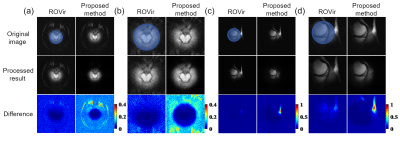 |
Screen Number: 20
0342. A
High Signal-to-Interference Ratio Two-dimensional Reduced-FOV
Imaging Method
P. Yuan, J. Zhou, C. Wang, K. Lin, P. Luo, F. Qi, L. Chen,
B. Qiu
University of Science and Technology of China, Hefei, China
Impact: Our method integrates k-space local linear
dependencies with the ROVir principle, effectively improving
peripheral signal suppression in 2D rFOV imaging, enhancing
SIR, and eliminating wrap-around artifacts. It can be
applied in various applications, including specific organ
imaging and real-time imaging.
|
| 16:40 |
 |
Screen Number: 21
0343. Nex-Gen
Personalized MRI: Boosting Low-Field MRI Reconstruction with a
Feature-Fusion Transformer and High-Field Priors
T. Oved, E. Shimron
Technion – Israel Institute of Technology, Haifa, Israel
Impact: We introduce ViT-Fuser and the hybrid loss, a
promising solution for accelerating and enhancing low-field
MRI by leveraging high-field reference scans from the same
subject. Our approach defines a personalized imaging
strategy and outperforms state-of-the-art reconstruction
methods and losses.
|
| 16:42 |
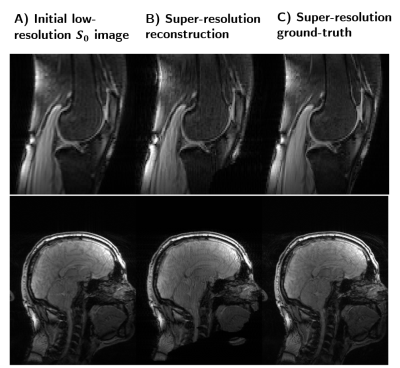 |
Screen Number: 22
0344. Efficient
multi-echo steady-state imaging with spatial-resolution
enhancement
C. Beitone, M. Chiew, K. Miller, N. Bangerter, P. Lally
Imperial College London, London, United Kingdom
Impact: Our proposed strategy shows promise as an
efficient trade-off between high spatial-resolution,
artifact minimisation, and SNR requirements, enabling
efficient relaxometry and morphological imaging in a single
rapid protocol.
|
| 16:44 |
 |
Screen Number: 23
0345. Multi-coil
multi-contrast joint reconstruction with protection from
hallucination: Application to low-field MRI
A. Atalik, S. Chopra, D. Sodickson
New York University, New York, United States
Impact: MR images from different contrast weightings
share substantial information. When this shared information
is rigorously leveraged, high acceleration levels can be
achieved, even in low-field settings, enabling efficient
workflows and facilitating broader adoption.
|
| 16:46 |
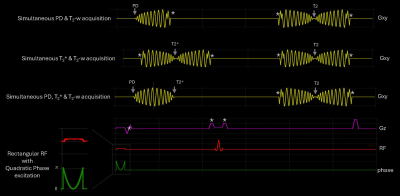 |
Screen Number: 24
0346. Enhanced
Volumetric Brain MRI with Simultaneous Multi-Contrast Imaging: A
Spiral Spin-Echo Sequence with Localized Quadratic Encoding
G. Krishnamoorthy, J. Pipe
University of Wisconsin, Madison, Madison, United States
Impact: This MRI sequence enables high-quality,
simultaneous T2,
T2*,
and PD imaging with volumetric coverage and isotropic
resolution. Its optimized SNR and artifact reduction improve
diagnostic accuracy and cross-contrast alignment, enhancing
clinical brain imaging effectiveness.
|
| 16:48 |
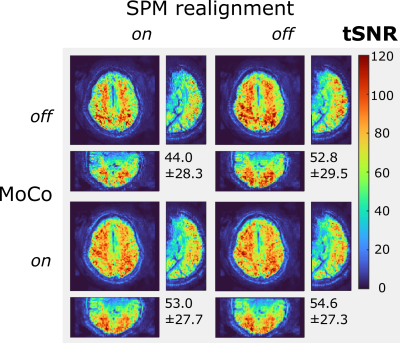 |
Screen Number: 25
0347. Run-time
motion and f0 control for 3D-EPI fMRI using short servo
navigators
M. Riedel, T. Ulrich, S. Bianchi, K. Prüssmann
ETH Zurich and University of Zurich, Zurich, Switzerland
Impact: Servo navigation achieves run-time motion und
field correction for 3D-EPI fMRI with high-precision, short
navigators, and rapid on-the-fly calibration. The navigators
are automatically drawn from the set imaging volume without
external tracking instrumentation enabling plug-and-play
motion correction for 3D fMRI.
|
The International Society for Magnetic Resonance in Medicine is accredited by the Accreditation Council for Continuing Medical Education to provide continuing medical education for physicians.